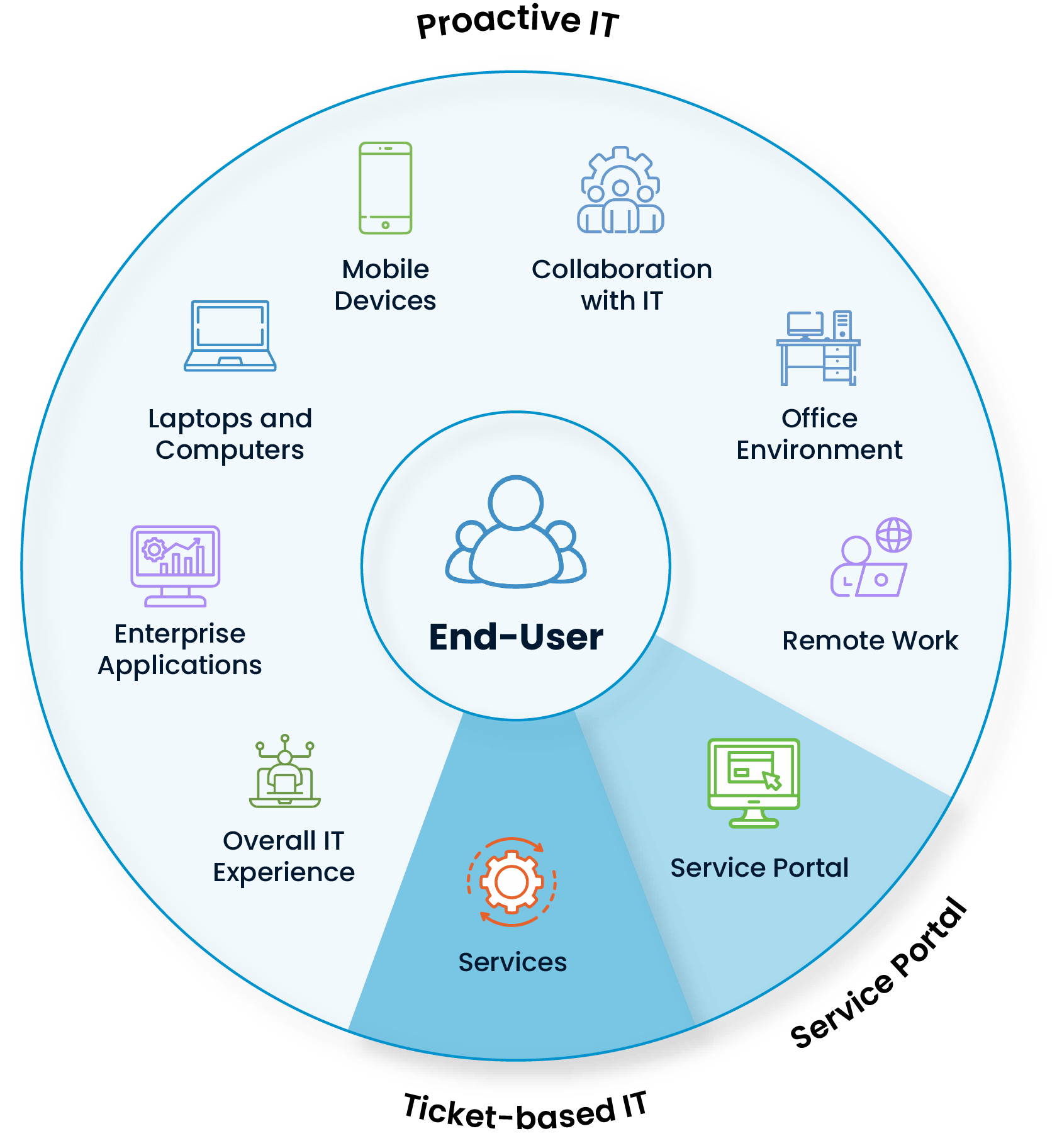
How is it applied in ITSM processes?
In today’s rapidly changing digital world, the role of Information Technology (IT) departments goes far beyond simply keeping systems up and running. While traditional IT Service Management (ITSM) plays a critical role in managing operations, it can fall short of meeting the demands of the modern business world. Now, what is expected from IT goes beyond just systems—it involves optimizing the employee experience and business processes. The perspective that fills this gap is IT Experience Management (ITXM).
ITXM (IT Experience Management) goes beyond technical metrics to measure and improve employee satisfaction, the satisfaction of teams receiving services, productivity, and the overall experience with IT services. As a result, IT transforms from an operational support unit into a strategic value-creating business partner and enhances ITSM processes more effectively.
In this article, we will discuss what ITXM (IT Experience Management) is, how its integration with ITSM contributes to IT operations and user experience, and how it provides a practical framework for decision makers and IT teams.
What is ITXM (IT Experience Management) and Why is it Important?
For many years, IT success was typically measured by technical indicators such as uptime, resolution times, and SLAs (Service Level Agreements). However, even though these metrics appeared to be “green,” we often saw that the user experience was “red.” This situation can result in services that appear flawless from the outside negatively impacting the productivity and satisfaction of those working on the inside. ITXM (IT Experience Management) is a perspective that fills this gap. Let’s examine the key differences step by step to see the value ITXM adds to IT Service Management (ITSM) in more concrete terms:
1. Experience-Focused New Approach
Traditional ITSM focuses on technical metrics such as uptime and response times. ITXM (IT Experience Management), on the other hand, focuses on “how IT is experienced.”
2. Transition from SLA to XLA
At the heart of ITXM are XLAs (Experience Level Agreements). XLAs measure satisfaction, productivity, and user perception, thereby complementing the limited technical perspective of SLAs.
3. Combines Objective + Subjective Data
User feedback is integrated with device and application performance data. This not only identifies problems but also clarifies opportunities for improvement.
4. Transforms IT into a Strategic Business Partner
Thanks to ITXM, IT is no longer just a “service provider.” It becomes a strategic business partner that contributes to the entire organization, streamlines workflows, increases productivity, and adds value to the organization.
How to Implement Strategic IT for IT Leaders Using ITXM Data
For many years, IT was viewed as a “cost center” in most companies. The operation of servers, the uninterrupted service of applications, and the closure of tickets were considered measures of success. However, ITXM (IT Experience Management) is fundamentally changing this picture. By prioritizing experience data, IT is no longer just an operational support function but a strategic value-creation mechanism directly impacting business outcomes. IT leaders can now justify their investments not only based on uptime percentages but also on outcomes reflected in employee satisfaction, increased productivity, and customer experience.
When employee experience is strengthened, it creates a ripple effect: more engaged employees, more efficient processes, happier customers, and direct revenue growth. To implement this transformation step by step, ITXM offers a practical five-step framework for IT leaders and decision-makers.

What is ITXM's 5-Step Framework?
1. Measure the Real Experience
It is not enough to look only at uptime and ticket closure numbers. ITXM (IT Experience Management) accurately reflects IT performance by measuring the real experience of employees and customers.
2. Interpreting Data
Collected experience data is combined with ITSM data. This allows us to understand not only the technical aspects of issues, but also their real impact on business.
3. Setting the Right Priorities
Projects and investments are prioritized not only based on urgent technical needs, but also on their contribution to experience and business value. This ensures that resources are used most efficiently.
4. Improving the Experience
Processes, tools, and support models are redesigned with experience-focused improvements. This approach increases both user satisfaction and efficiency.
5. Ensuring Continuous Improvement
Experience data is regularly monitored and fed with feedback. This ensures that IT remains strategic, value-driven, and future-ready.



